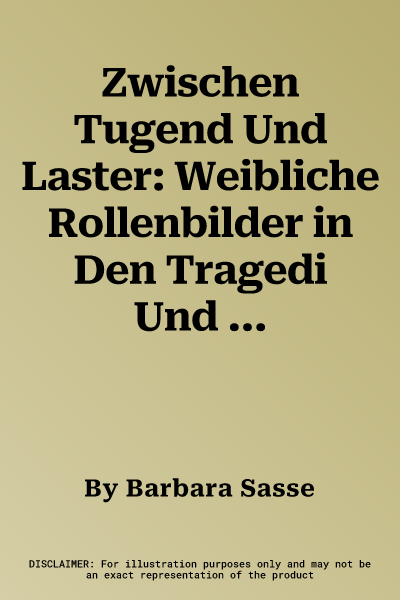Barbara Sasse provides the first detailed analyses of a representative
corpus of the plays, the so-called tragedi and comedi, written by the
Noremberg shoemaker Hans Sachs (1494-1576) in the middle of the 16th
century. For each play is offered a thorough examination of its
intertextual frames of reference; this includes both the literary
sources, which Sachs usually conveyed via contemporary German
translation, and his own motivic related master songs and rhymed stories
(Spruchgedichte). This makes it possible to describe the author's
dramaturgical methods more precisely and, in particular, the
relationship between acting and moral instruction. Lastly, a closer look
at Sachs' sources also more clearly reveals the author's crucial
contribution to both the reception and popularisation of the various
European literatures in the German-speaking territories of the 16th
century and beyond.In particular, the study focuses on the numerous
female characters in the plays. Sachs, who was enormously interested in
literature, drew inspiration for these from the whole Western literary
tradition accessible to him, especially on the contemporary book market:
the authors of classical antiquity, the spiritual and secular literature
of the European Middle Ages and the Italian Humanists. Female figures
assume a key function throughout in the contemporary topics discussed in
the play, primarily the Lutheran doctrine and its model of marriage and
family, but also the political and social discourses of order. In
genre-specific terms, the new serious drama proves to be a creative
virtual space for exhibiting new female attributes and potentials for
action, which inevitably bring out subliminal contradictions to the
collective moral concepts promoted in the appended doctrine. Conversely,
however, the teaching often supports literary discourse, for example by
linking female vices back to male misconduct, thus rebalancing the
one-sided scolding of women within the framework of an essentially
bilateral-structured marriage discourse.The aim of the book is to make a
significant contribution to Sachs' research in German studies. With the
tragedi and comedi, a text corpus and a genre were chosen that have
received little attention, especially in more recent studies, in which
there have been a clear preference to focus on the master songs. In
particular, the book is a quasi-complementary addition to the study by
Johannes Rettelbach on the non-dramatic poems of Hans Sachs, published
in 2019 also in the Imagines Medii Aevi series.

